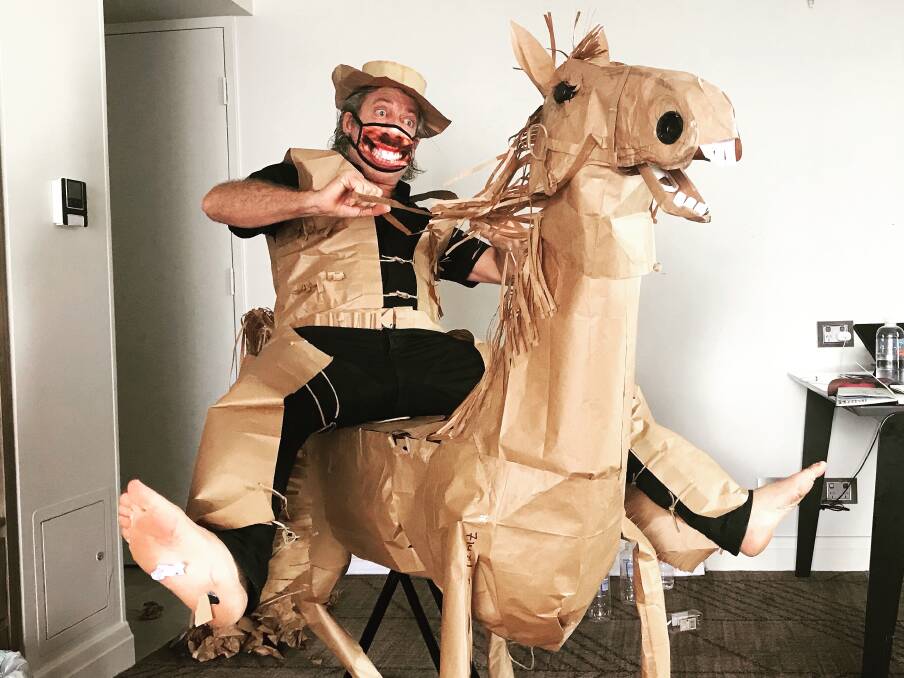
Nick Coatsworth wasn't aiming for posterity when he placed an online order for 20 pairs of bright blue socks a year ago.
The socks, featuring a syringe pointing right at a leering, spiky red protein, had made him laugh when someone gave him a pair as a joke. For the head of Canberra Hospital, they seemed to be the perfect gift to give to all his healthcare staff involved in administering the first doses of Pfizer in the weeks to come.
So he was mildly surprised to receive a call, some weeks later, from a curator at the National Museum of Australia, asking whether he'd donate a pair to the national collection.
"I thought it was kind of interesting that they would even display a pair of socks, let alone ones that I've worn," he says.
"I didn't really think of it as an exhibit or even part of history."
Nevertheless, he gladly handed over his own pair - he still keeps another couple handy for wearing on his pushbike - and didn't think too much more about it.
A month later, in another city in another state, former Chief Medical Officer Brendan Murphy underwent something truly historic. He received an injection of what was ostensibly the first dose of AstraZeneca vaccine in Australia - a majestic first link in what was touted as our lifeline out of this historic pandemic.
The tiny glass vial would very soon come to be completely ubiquitous. Literally millions just like it - containing varying types of vaccines - would be emptied into arms and duly disposed of all over the country in a mass vaccination rollout that, in fits and starts, would make us one of the world's most vaxxed countries.
But this one vial instantly took on a special significance. This one would not be thrown out and will, in the near future, also become part of the museum's COVID collection, along with a copy of the federal government's pandemic plan.
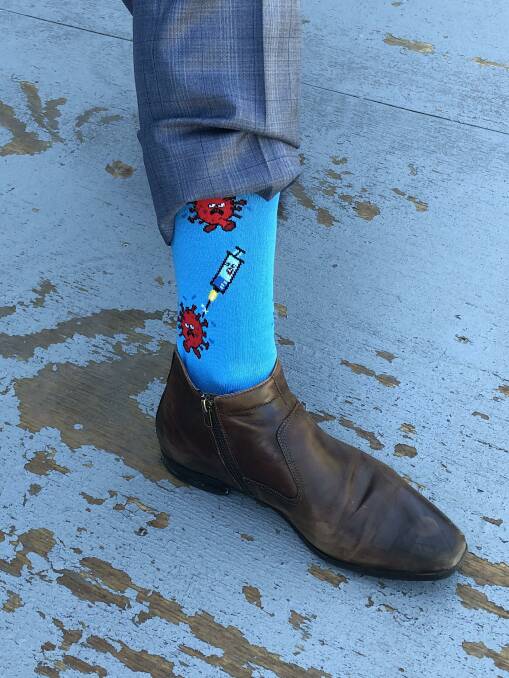
A month after Murphy received his jab, up in Brisbane, an artist named David Marriott was having a very different COVID-related experience.
Having returned from an unexpected trip to his native England to farewell his father, who had succumbed to COVID in hospital, he found himself in quarantine in a city hotel.
Far from being mired in the usual dreaded two weeks of boredom, Marriott found himself fixated on the mountains of takeaway bags that were building in his room, from all the food that was being delivered to him daily.
"They were really good quality brown paper bags," he says, from Sydney, where he works as an art director in Leichhardt.
"And on the third day, there was a poke bowl with one of the meals, a little round bowl, and I was like, that's it, that's the beginning of a hat. I cut out a round rim and stuck it around the bowl, and it was like a brown paper cowboy hat."
It reminded him of that old joke - have you heard about the brown paper cowboy? He got done for rustling.
It was a "silly old dad joke" that made him laugh, and kept him distracted. The two weeks flew by, and by the end, he had completed an entire cowboy costume and a beautiful, life-sized horse, all made from brown paper takeaway bags.
The photos he posted online swiftly went viral, appearing in news pages all over the world.
He received hundreds of messages, many thanking him for the smiles he'd raised. He even made his own mother laugh for the first time since the funeral.
"I really enjoyed that time on my own, just doing whatever I wanted, whatever came into my head, it was just brilliant," he says.
Collecting for contemporary issues or experiences or events is a fascinating exercise because you're trying to make judgments about something prosaic taking on, if you like, an emblematic or symbolic meaning far beyond its material value.
National Museum of Australia director Mathew Trinca
And he too was surprised to get a call from a National Museum curator, interested in acquiring the horse.
Lily Withycombe, the curator in question, says deciding which physical objects to bring into the national collection is a complex, multi-layered process, one involving many months of meetings, negotiations, rationalisations and piles of dreaded but necessary paperwork (Murphy's tiny glass vial is currently marooned in such a pile, waiting to be officially received).
Marriott's horse turned out to be more complex than expected. A beautiful object made under circumstances that are unlikely ever to be replicated should be enough, you'd think, for something to be grabbed without question.
It had lifted untold numbers of spirits, and spoke volumes about the bizarre experience of lockdown, tinged with grief, relief and hope. It was, Withycombe says, a winner on almost every count.
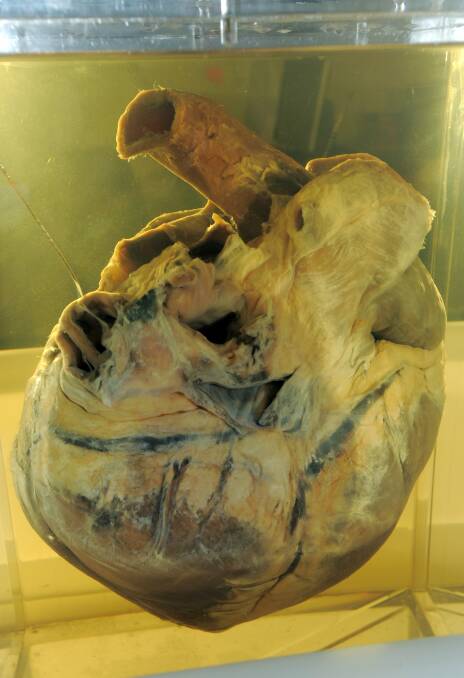
Except that by its nature, it may not last quite long enough to form part of the museum's National Historical Collection, the top tier of its collections and one that's reserved only for items to be held in perpetuity.
The ones, in other words, that won't fall apart in a hurry.
To the layperson, this criteria raises all kinds of questions around the many unfathomably precious items that have found their way into the national collection through varying quirks of history.
And since we're on the topic of horses, the one that springs most readily to mind is Phar Lap's heart - a giant heart that once beat in the mighty chest of Australia's most famous champion racehorse, now preserved in a massive jar of formaldehyde.
It's so fragile it can barely be moved. It's also one of the most iconic items in the collection, the one most visitors are drawn to, grisly though it is.
There's also, lately, been a whiff of controversy around it. Is it really Phar Lap's heart? Does it matter, if what it represents is so important? And, more to the point, just how long is such an item able to be displayed before it becomes just too unsightly?
Meanwhile, a unique - and uniquely beautiful - brown paper horse stuck together with sticky tape should fit the bill, and be able to take its place beside that real life heart. It doesn't, quite.
But a generic glass vaccine vial just like the millions that have already been disposed of? It's destined for greatness, collection-wise.
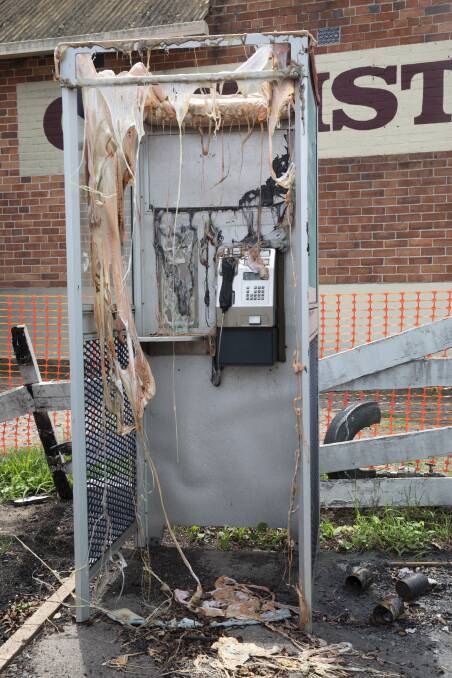
The museum's COVID collection, such as it is, is so far surprisingly small for something that feels so huge. Aside from Nick Coatsworth's socks, David Marriott's horse and, at some stage, Brendan Murphy's vial, it will also include the playful signage from last year's Australian Open, the first major tennis tournament in COVID times, and filled with puns involving tennis racquets and the space needed for social distancing.
The fact remains that items take up space, something notoriously hard to come by in Canberra's museum sector.
But the ways in which the museum is telling stories is changing.
While building a physical collection of objects that can speak volumes, the museum is also maintaining its Momentous website, set up initially as a platform for photos and stories about the 2020-2021 bushfires, but one that has segued seamlessly into stories and experiences of the pandemic.
It's as though the two seismic events happened too close together for us to be able to separate them, at least psychologically.
It's a way, says senior curator Libby Stewart, of collating experiences in a way that couldn't have been done in other eras.
"That website will be up forever and it enables us to collect much more widely than we can physically," she says.
But how to do this with objects, when a global event represents a multitude of experiences, memories and traumas?
During the summer of bushfires, museum staff acted quickly to bring certain items into the collection, ones that help tell the story of Australia's reckoning with climate change and bushfire threats.
For museum director Mathew Trinca, it's a melted phone booth from the streets of Cobargo that speaks volumes.
"You or I would have passed that telephone box and the only thing we would have remarked upon in the last decade was how anachronistic is that, because everyone's got a mobile phone now," he says.
"Now you see it and you're struck by what an eloquent reminder is of this horror that was visited upon a South Coast town.
"Collecting for contemporary issues or experiences or events is a fascinating exercise because you're trying to make judgments about something prosaic taking on, if you like, an emblematic or symbolic meaning far beyond its material value."
Stewart says there's a definite moment in which an otherwise ordinary object becomes something else - a symbol, a story, a museum object.
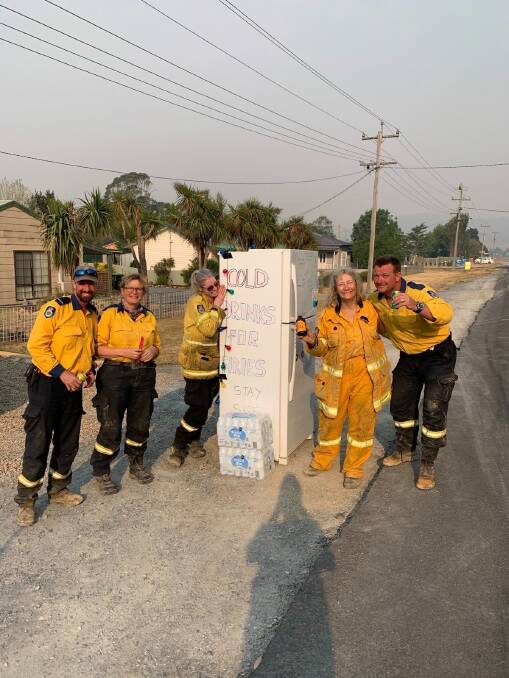
"I've had this on a number of occasions in collecting, where something's handed over, it's this everyday object, and you're standing there with your gloved hands," she says.
"Once it's in your hands as museum curator representing the museum, then it becomes something quite different - a level of meaning and significance is then added to it.
"It really changes it, it's quite remarkable, and we often wear gloves in public settings just to really signify to people that this is a change, and this object which you thought was really plain and uninteresting, has become something else."
And how will these objects look in years to come? What will they say, and how loudly?
Coatsworth likes to think people might one day look at his socks - his jokey, silly socks - and see them as a symbol of triumph.
"It's hard to imagine that a disease would cause as much impact as it did. But it did, and we did really well. That's what I would say," he says.
"But I think it could be hard looking back. The Spanish Flu kind of pales into insignificance between World War One and World War Two as a historical event. And it may well be that ... pandemics are designed to be confined to the sort of lesser importance in history."
This gets to the heart of what Stewart, Withycombe and curators all over the country and throughout the world are doing as they reach out for these mundane, symbolic, unusual or otherwise esoteric objects - they are trying to hold onto a slippery, amorphous piece of time.
It's not easy, or straightforward - but the result should ultimately simplify and make sense of an otherwise impossibly complex event in history.
"You've always got the feeling of, what are we missing out on? There's a bit of FOMO - are we not getting what we really should? What's passing us by?" Stewart says.
"Occasionally something has come up on Momentous - there was a COVID quilt that a woman made, and the museum of Victoria ended up taking it into its collection, and we thought damn, that would have been really good! But at least someone's got it."







